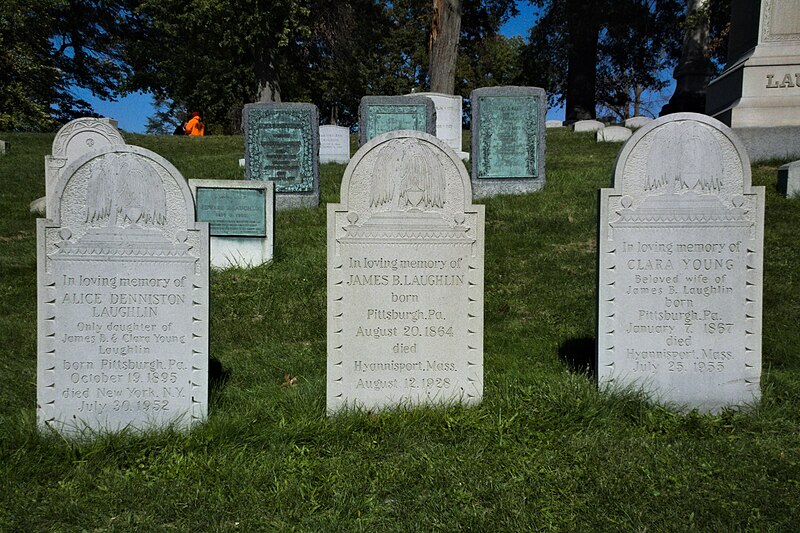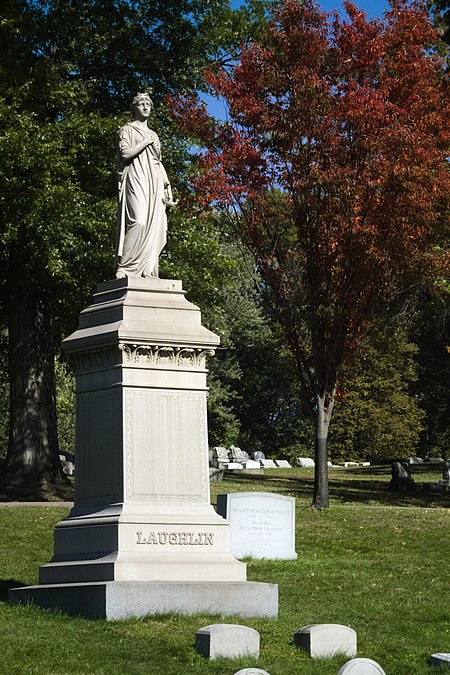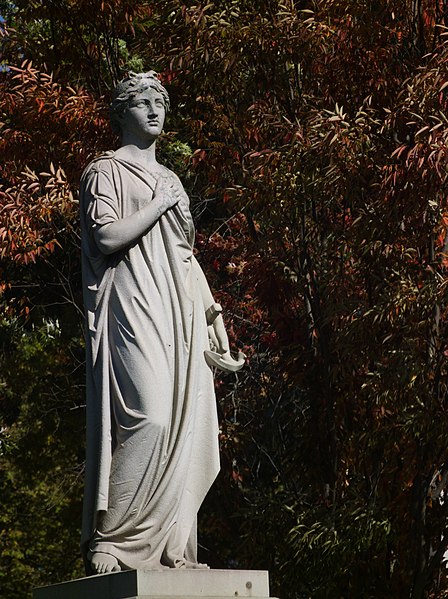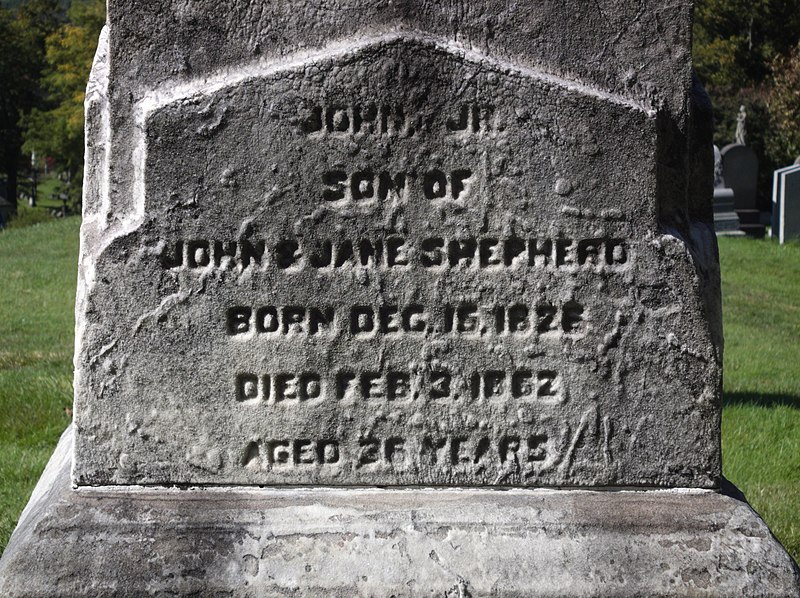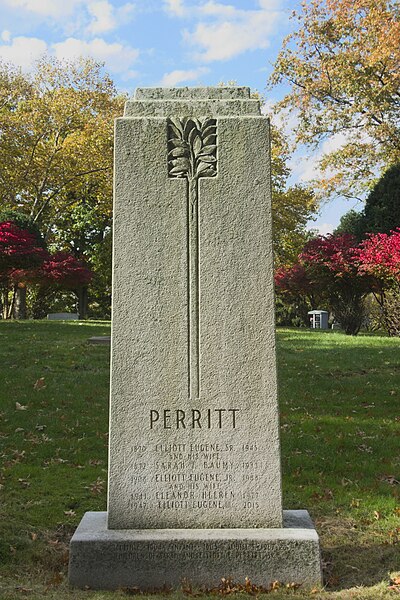
A simple stele with Art Deco flair. It is running out of space for Elliott Eugene Perritts. Enlarge the picture and note the three children remembered on the base. Three funerals in four years: that is what childhood mortality used to be like even among wealthy families before we figured out how to vaccinate against childhood diseases.



